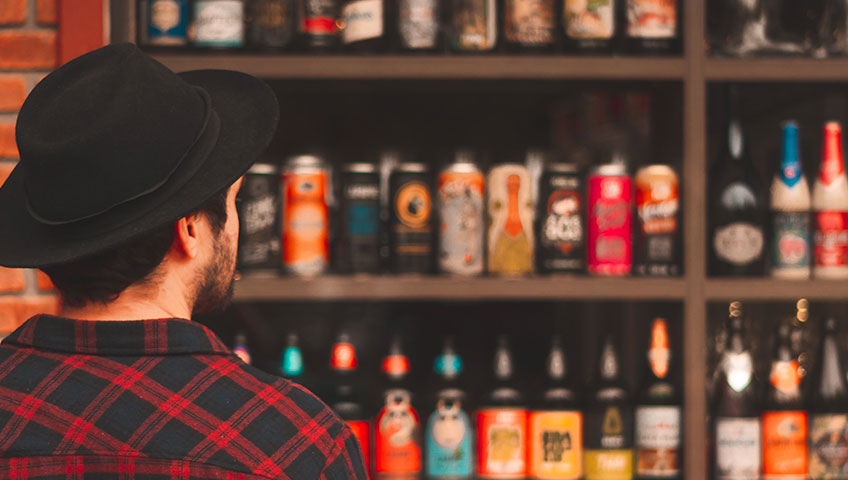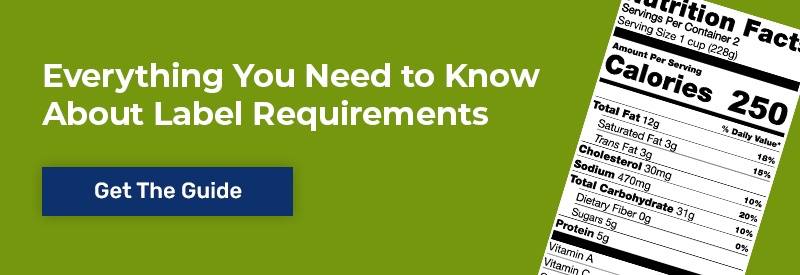
Important Guidelines For Designing Attractive Craft Beer Labels
There are over 4,000 craft breweries in the U.S, making craft brewing one of the most competitive markets in the alcoholic beverage industry.
So, how do you help your craft beer brand stand out from the other IPA‘s, pilsners, lagers, imperial stouts, and pale ales in the crowd? And, how do you ensure you’re compliant with regulations and give consumers the information they need on your beer can and beer bottle labels? Here are some things you should consider for your next beer label design.
TTB Requirements for Beer Label Design
Before you get your new beer release on the market, you need to apply for a Certificate of Label Approval (COLA) with the Alcohol and Tobacco Trade Bureau (TTB).
Full details on beer packaging and label requirements are listed under the Beer Beverage Alcohol Manual, also known as the BAM. But, there are a few categories you need to pay particular attention to when designing your label.
Brand Names
The name cannot contain the “age, name, origin, identity or characteristics of the malt beverage” unless that information is accurate and won’t cause confusion. For example, you can’t call your Belgian-style ale “Craft Brewery’s Belgian Ale,” because people may think it was brewed in Belgium. However, you can use these terms if you add “style” to the brand name: “Craft Brewery’s Belgian Style Ale” is OK.
Half pint and smaller containers must have the brand name written in a font that is at least 1 mm tall. Larger containers must use a 2mm or taller font. That means you can print the word “style” in the minimum font size, then use a larger font for the rest of the name.
Names and statements can’t suggest alcohol content. This includes phrases like “extra strength” and “high proof.”
All insignia, including flags, coats of arms and crests, are banned from beer labels. You can make a seasonal beer celebrating Independence Day or Cinco De Mayo, but you can’t have an American or Mexican flag on the label.
Class and Designation
There are dozens of classes and designations for beer, covering different styles. These categories are listed in Chapter 4 of the BAM. This information goes on the front of your bottle or can label and you can emphasize this text to tell consumers what kind of beer you’re selling.
Name and Address of the Brewer, Importer or Distributor
The brewer’s name or trade name must be the same one used on the Brewer’s Notice application. This is the notice you file with the TTB that lists the ingredients in the beer.
Net Contents
Contents must be listed by volume, including both fluid ounces and milliliters, with one exception. If the container holds exactly one pint, quart or gallon, or a fraction of a pint, you can use these terms instead.
Ingredient Disclosures
If your beer contains saccharine, sulfides or FD&C Yellow No. 5, you must place a warning on the label. If your beer contains aspartame, it must contain the warning “PHENYLKETONURICS: CONTAINS PHENYLALANINE” in all caps on the label. Saccharine and sulfides aren’t healthy, so many buyers may choose to avoid them. However, some people can’t digest aspartame, making it dangerous for them to consume.
Health Warning
You must include this exact warning on the label:
“GOVERNMENT WARNING: (1) According to the Surgeon General, women should not drink alcoholic beverages during pregnancy because of the risk of birth defects. (2) Consumption of alcoholic beverages impairs your ability to drive a car or operate machinery, and may cause health problems.”
“GOVERNMENT WARNING:” must be written in bold, while the rest of the warning uses normal type.
The Beer Institute’s Voluntary Disclosure Initiative: Best Practices for Beer Labeling
The required labeling on beer leaves out a lot of information that consumers want in order to make informed purchase decisions. To address this, the Beer Institute introduced their Voluntary Disclosure initiative. Compliant labels add the following information:
- A “Serving Facts” statement on the container that includes calories, carbohydrates, protein and fat, as well as alcohol by volume (ABV) or alcohol by weight (ABW). The choice between ABV and ABW is a matter of complying with state laws. Most states require ABV.
- Freshness date, which can be the packaging date, or a “best by” date
- A list of ingredients printed directly on the label, exterior packaging, or on a website that can be accessed by scanning a QR code on the container
Several major breweries have already agreed to this initiative. The companies following the initiative guidelines account for just over 80% of all beer consumed in the United States.
Getting Customers’ Attention With The Best Craft Beer Label Designs
Brewing high quality beer isn’t enough. Packaging design matters, and it’s critical to stay in tune with the industry’s graphic design trends. Ask any graphic designer: great graphic design is an art form, but you don’t need to be from big cities like New York or San Francisco to come up with something amazing!
Labeling beer is like labeling any other product. Use of unique typography or color helps your beer stand out from the dozens of choices consumers are presented with at retailers. That said, there are a few unique traits of the craft beer industry label designers should be aware of.
A study by Clemson University found shoppers are most attracted to glossy, metallic and wood film labels, and they spend the least time noticing paper labels. These customers look the longest at clear film labels, followed by metallic and matte film, while they spend the least time looking at wood film labels.
In a recent Nielsen survey, two-thirds of the craft beer-drinking respondents said they only bought beer made in their region, and 57% only bought beer made in their city. Emphasizing your brewery’s location on the label or logo design can boost sales, especially if you’re a small company with limited distribution.
46% of craft beer buyers said they were more likely to buy beer with the Brewer’s Association Independent Craft Certified seal. Beer that has this seal has 25% or less of its ownership controlled by a non-craft brewer. This makes it easy for buyers to find true craft beer among product lines made by large companies.
How Do I Get My New Label Designs Onto My Containers?
CTM Labeling Systems can set up machines for can and bottle labeling, helping to meet demands at any scale–from small, local microbreweries to large breweries. See how we helped Birdfish Brewing Company increase production efficiency by creating a new labeling system for their products.
If you sell your products in bottles, you should take a look at our vertical trunnion roller system. It is designed to support attachments that apply multiple labels, including wrap, neck, and front and back labels with high accuracy and high speed.
If you need a can-labeling solution, take a look at our 360a WR Wrap System. This machine is built for labeling round containers in a range of sizes, and it can save multiple label configurations (which lets you switch between can sizes, labeling 12 ounce, tall boy and crowler cans all with one machine).
We Have the Equipment to Fit Your Labeling Needs, Big or Small
Whether you’re just starting to bottle your beer, or you’re making the switch to high speed can production, CTM Labeling Systems has labeling machines that fit your needs.
Our local distributors work with you to set up a labeling system that keeps pace with your bottle and can production lines, maximizing efficiency while reducing label errors and damaged product. We look forward to working with you!





